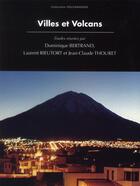Résumé:
Scientists use remote sensing to observe, analyze and unravel changes on the surface of the Earth. The récent arrival of a new generation of satellites (IKONOS, GEOEYE, WORLDVIEW) with extremely high resolution has improved our ability to study hazardous phenomena such as volcanic eruptions,... Voir plus
Scientists use remote sensing to observe, analyze and unravel changes on the surface of the Earth. The récent arrival of a new generation of satellites (IKONOS, GEOEYE, WORLDVIEW) with extremely high resolution has improved our ability to study hazardous phenomena such as volcanic eruptions, earthquakes, tsunamis and large floods. Remote sensing is also an efficient tool for investigating the effects of anthropogenic changes including climate change. Hazardous phenomena and anthropogenic changes are common in South-East Asia and studies from the region formed the core of the international conference on 'Remote Sensing, Natural Hazards and Environmental Change'. The conference was organized on 28 and 29 July 2011 in Singapore by CRISP, National University of Singapore and Laboratoire Magmas et Volcans (CNRS UMR6524), CLERVOLC, Université Blaise Pascal (Clermont-Ferrand, France). It was part of the ICT- STIC Asia research and exchange program sponsored by the French Foreign Ministry in South-East Asia.
The book includes four keynote addresses, 14 extended abstracts and 16 short abstracts. The four keynote addresses are on : (1) International system of space data acquisition and delivery for earthquakes in Japan, (2) Quantifying volcanic hazard and risk, (3) Remote sensing of volcanic emissions in the Asia-Pacific region, and (4) Spatial information for analyzing changing hydro-meteorological risk. The extended abstracts focus on a broad range of research topics all related to remote sensing : monitoring, mapping and quantitative assessment of hazards and risks from volcanic eruptions, earthquakes, tsunamis and large floods ; development of satellites and platforms for improving monitoring techniques, and quantitative methods for remotely assessing the impacts and losses due to environmental changes. These include global warming and changes in vegetation, climate and hydrology in SE Asia and Australia.
Donner votre avis















